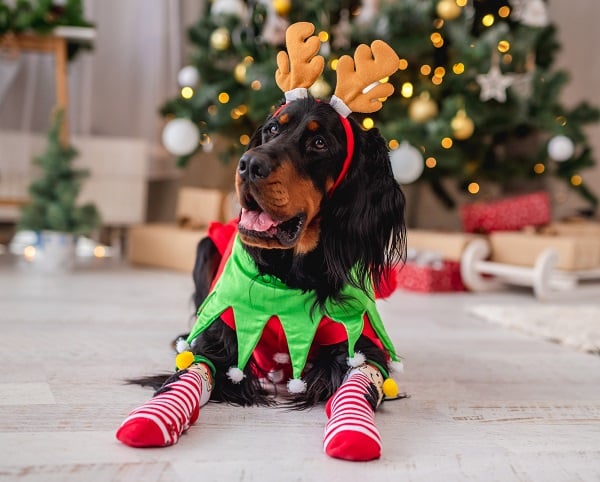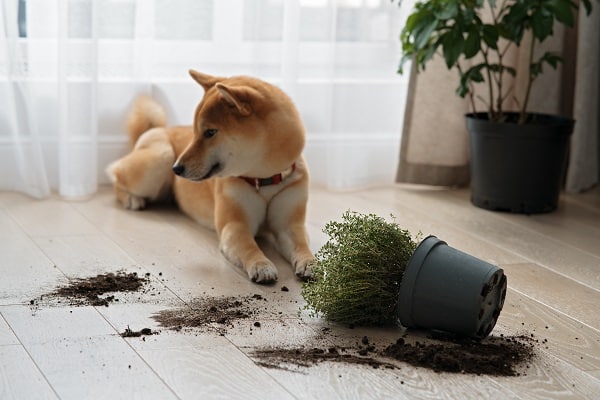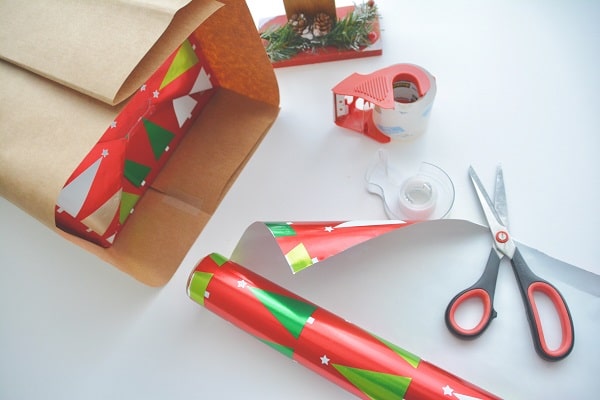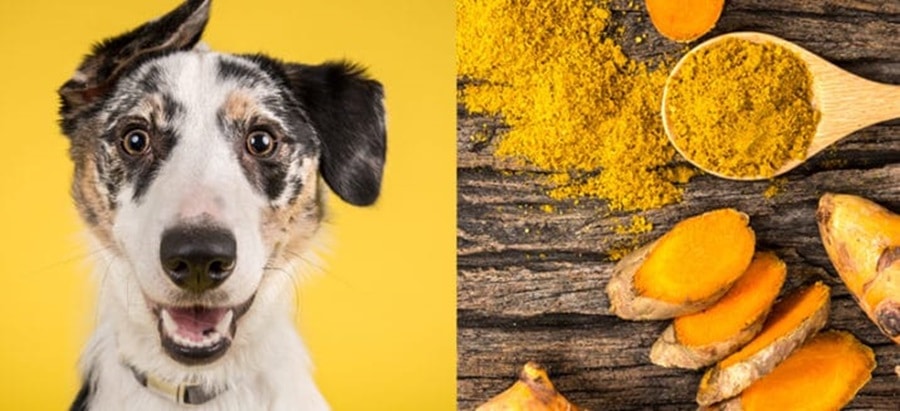The holiday season brings a special set of risks for your furry companions, with the festive atmosphere introducing them to a myriad of potential hazards. From tantalizing treats that can upset their stomachs to shiny decorations that can pique their curiosity, the safety of pets can often be overlooked in the hustle and bustle. This guide aims to arm pet owners with essential knowledge and strategies to ensure their pet safety measures stand up to the challenges this season brings. It’s about creating a balance between festive fun and a pet-secure environment, ensuring that the holidays remain merry for every member of the family, including the four-legged ones.
Contents
- 1 Navigating Holiday Hazards For Pets
- 2 Festive Foods: A Guide To What’s Safe And What’s Not
- 3 Decoration Dangers And How To Avoid Them
- 4 Plant Safety: Keeping Toxic Flora Out Of Reach
- 5 The Perils Of Gift-Wrapping: Keeping Pets Safe
- 6 Fireworks And Loud Noises: Protecting Your Pet’s Ears
- 7 Traveling With Pets: Safety Tips For On-the-Go
- 8 Make Sure Your Pet Has A Joyous Holiday Season!

The holidays can transform a home into a wonderland of delights, but many of these seasonal changes pose significant threats to pets. Sparkling ornaments invite curious paws and noses, while electrical cords from festive lights may turn into chew toys with perilous consequences. Even the Christmas tree, a centerpiece of holiday decor, can be a source of danger, with pets potentially knocking it over or ingesting fallen needles. Awareness is the first step in prevention; recognizing which decorations and holiday items are potential dangers can save a pet from an emergency visit to the vet.
Beyond the obvious tinsel and lights, other less recognized hazards lurk in holiday households. The bustling nature of the season often brings unfamiliar items into the home, such as gift-wrapping supplies, which can cause intestinal blockages if ingested, and batteries from new gadgets, which can be toxic. It’s crucial to keep such items out of pets’ reach and to be vigilant about small changes in their behavior that may indicate distress or illness. By staying informed about these risks, pet owners can take proactive measures to safeguard their companions.
Festive Foods: A Guide To What’s Safe And What’s Not

The aroma of holiday cooking is irresistible, and it’s not just humans who find it appealing; pets are equally enticed by the smell of roasting turkey and baking pies. However, many traditional holiday foods can be harmful to pets. Chocolate, for instance, is a well-known no-no, but other foods like onions, grapes, and certain nuts can be just as dangerous, causing anything from gastrointestinal upset to severe toxicity. It’s imperative to understand which treats are safe and which could lead to a holiday disaster.
To prevent accidental ingestion, it’s advisable to keep pets out of the kitchen during meal prep and away from the dining area during feasts. Additionally, ensuring that trash is securely stored away can prevent a pet from scavenging through harmful leftovers. For those wanting to include their pets in the festive feasting, there are many pet-safe recipes and treats available that can allow them to partake without risk. By being mindful of these dietary dangers, pet owners can ensure that their pets enjoy the holiday season without any health scares.
Decoration Dangers And How To Avoid Them

Decorations are the hallmark of the holiday season, yet they present a world of danger to pets. The twinkling lights and shiny baubles that add to the festive ambiance can be hazardous. Pets may become entangled in strings of lights, or worse, receive an electric shock from chewing on cords. Ornaments, especially those made of glass, can shatter and cause injury, while candles can be knocked over, leading to burns or fires. It’s essential to decorate with a pet’s safety in mind, opting for non-toxic materials and secure placement.
One effective strategy is to place decorations out of pets’ reach and to secure the Christmas tree to prevent tipping. Choosing battery-operated candles over traditional ones can eliminate the risk of open flames. It’s also beneficial to supervise pets when they’re in areas with decorations, as supervision can prevent mishaps. By taking these precautions, the home can still sparkle with holiday spirit, but without compromising the well-being of pet companions.
Plant Safety: Keeping Toxic Flora Out Of Reach

The festive season often invites the tradition of adorning homes with beautiful plants, but not all are safe for your animal friends. Holly, mistletoe, and poinsettias are holiday staples that can cause health issues ranging from mild nausea to severe toxicity if ingested by pets. It’s crucial for pet owners to recognize which plants are harmful and to either avoid them altogether or ensure they are placed well beyond a pet’s reach. Even non-toxic plants can cause gastrointestinal distress if a pet decides to nibble on too many leaves or stems.
For those who don’t want to forgo the tradition of holiday plants, there are several non-toxic alternatives that can add a festive touch without the risk. Artificial plants offer the holiday aesthetic without endangering pets, and there are even live plants that are safe for pets, such as certain types of orchids and ferns. Should a pet come into contact with a toxic plant, it’s essential to know the signs of poisoning and to contact a veterinarian immediately. Keeping emergency numbers handy and knowing the location of the nearest 24-hour animal hospital can ensure prompt treatment if an incident occurs.
The Perils Of Gift-Wrapping: Keeping Pets Safe

Gift-wrapping is an activity that marks the season of giving, yet the ribbons, strings, and paper can be perilous playthings in the paws of a pet. Cats, in particular, are drawn to the strings and ribbons, which can cause intestinal blockages or choking if swallowed. Dogs are not immune to the allure of these shiny objects either and can ingest large pieces of wrapping paper or plastic, leading to obstructions. It’s important to keep the gift-wrapping area off-limits to pets and to clean up immediately after wrapping sessions.
When it comes to pets and presents, it’s also wise to consider the contents of the gifts themselves. Small, chewable items can be swallowed, and batteries or gadgets can pose a risk if they are left within reach of a curious pet. Pet-proofing the tree and gifts by placing them out of reach or in a pet-inaccessible room can prevent many of these risks. Additionally, when disposing of wrapping materials, ensure they are placed in a secure trash receptacle that pets cannot access. By taking these steps, the joy of gift-giving can remain a safe and happy occasion for everyone.
Fireworks And Loud Noises: Protecting Your Pet’s Ears

The holiday season is often accompanied by loud celebrations, including fireworks, which can be terrifying for pets. The sudden, loud noises can trigger a pet’s fight or flight response, leading to panic and potentially harmful behaviors such as running away or destructive chewing. It’s essential for pet owners to be proactive in creating a calming environment when fireworks or loud noises are anticipated. This can include closing windows and curtains, playing soothing music, or using white noise to mask the sounds.
There are also various products available to help pets cope with noise phobia, such as anxiety wraps or vests, calming collars, and even prescribed medications from a veterinarian for more severe cases. Desensitization training leading up to the holidays can also be beneficial, where pets are gradually exposed to recorded firework sounds at a low volume, slowly increasing the volume over time as the pet becomes more accustomed to the noise. With patience and preparation, pets can learn to associate loud sounds with positive experiences, reducing their overall stress and anxiety during the holiday season.
Traveling With Pets: Safety Tips For On-the-Go

The holidays often involve travel, and when pets are part of the family, their travel needs must be considered as well. Preparing for a journey with a pet involves more than just booking a pet-friendly hotel; it requires considering their comfort and safety during transit. Whether traveling by car or plane, it’s crucial to have a secure and comfortable carrier, familiar blankets or toys to ease stress, and plenty of water and breaks for longer trips. Ensuring pets have proper identification, like microchips and tags, is also crucial in case they become separated from you.
For those traveling by car, never leave pets alone inside the vehicle, especially in extreme temperatures. Regular stops can allow pets to stretch and relieve themselves, but always on a leash to prevent them from getting lost or running into traffic. When flying, check with the airline for specific pet travel requirements and consider the pet’s health and stress levels when deciding if air travel is the best option. By planning ahead and considering the needs of their pets, owners can make holiday travel a safe and enjoyable experience for all.
Make Sure Your Pet Has A Joyous Holiday Season!
Ensuring the safety and happiness of pets during the holiday season requires attention and preparation. By being mindful of the potential hazards and taking the necessary precautions, pet owners can create a festive atmosphere that is enjoyable for both humans and pets. Remember, the best gift you can give your pets this holiday season is a safe environment where they can thrive. Take action for pet safety this holiday season and ensure that the celebrations are remembered for the joy they bring, not the accidents they prevent.


